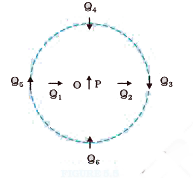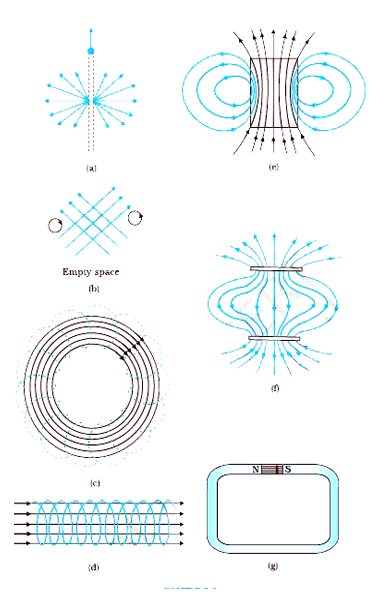Complete Solutions to Example of chapter MAGNETISM AND MATTER of Class 12 book with complete answers and questions
| Class 12 | PHYSICS |
| Chapter | MAGNETISM AND MATTER |
| NCERT GUJARATI | Example |
| Number Of Questions | 11 |
| Academic Year | 2023-24 |
In Fig 5.4 (b), the magnetic needle has magnetic moment `6.7 xx 10^(-2) Am^(2)` and moment of inertia `I=7.5 xx 10^(-6) Kg m^(-2)`. It performs 10 complete oscillation in 6.70s. What is the magnitude of the magnetic field?
View SolutionA short bar magnet placed with its axis at 30° with an external field of 800 G experiences a torque of 0.016 Nm.
(a) What is the magnetic moment of the magnet ?
(b) What is the work done in moving it from its most stable to most unstable position ?
(c) The bar magnet is replaced by a solenoid of cross-sectional area `2 xx 10^(-4) m^(2)` and 1000 turns, but of the same magnetic moment. Determine the current flowing through the solenoid.
View Solution(a) What happens if a bar magnet is cut into two pieces: (i) transverse to its length, (ii) along its length?
(b) A magnetised needle in a uniform magnetic field experiences a torque but no net force. An iron nail near a bar magnet, however, experiences a force of attraction in addition to a torque. Why?
(c) Must every magnetic configuration have a north pole and a south pole? What about the field due to a toroid?
(d) Two identical looking iron bars A and B are given, one of which is definitely known to be magnetised. (We do not know which one.) How would one ascertain whether or not both are magnetised? If only one is magnetised, how does one ascertain which one? [Use nothing else but the bars A and B.)
View SolutionWhat is the magnitude of the equatorial and axial fields due to a bar magnet of length 5.0 cm at a distance of 50 cm from its mid-point? The magnetic moment of the bar magnet is 0.40 A `m^2`, the same as in Example 5.2.
View SolutionFigure 5.5 shows a small magnetised needle P placed at a point O. The arrow shows the direction of its magnetic moment. The other arrows show different positions (and orientations of the magnetic moment) of another identical magnetised needle Q.
(a) In which configuration the system is not in equilibrium?
(b) In which configuration is the system in (i) stable, and (ii) unstable equilibrium?
(c) Which configuration corresponds to the lowest potential energy among all the configurations shown?
View SolutionMany of the diagrams given in Fig 5.7 show magnetic field lines (thick lines in the figure) wrongly. Point out what is wrong with them. Some of them may describe electrostatic field lines correctly. Point out which ones.

View Solution(a) Magnetic field lines show the direction (at every point) along which a small magnetised needle aligns at the point). Do the magnetic field lines also represent the lines of force on a moving charged particle at every point?
(b) Magnetic field lines can be entirely confined within the core of a toroid, but not within a straight solenoid. Why?
(c) If magnetic monopoles existed, how would the Gauss's law of magnetism be modified?
(d) Does a bar magnet exert a torque on itsell due to its own field? Does one element of a current-carrying wire exert a force on another element of the same wtre?
(e) Magnetic field arises due to charges in motion. Can a system have magnetic moments even though its net charge is zero?
View SolutionThe earth magnetic field at the equator is approximately 04.G. Estimate the earth's dipole moment.
View SolutionIn the magnetic meridian of a certain place, the horizontal component of the earth's magnetic field is 0.26G and the dip angle is `60^(@)`. What is the magnetic field of the earth at this location?
View SolutionA solenoid has a core of a material with relative permeability 400. The windings of the solenoid are insulated from the core and carry a current of 2A. If the number of turns is 1000 per metre, calculate (a) H, (b) M, (c) B and (d) the magnetising current `I_(m)`.
View SolutionA domain in ferromagnetic iron is in the form of a cube of side length `1mu` m. Estimate the number of iron atoms in the domain and the maximum possible dipole moment and magnetisation of the domain. The molecular mass of iron is 55 g/mole and its density is `7.9 g/(cm)^(3)`. Assume that each iron atom has a dipole moment of `9.27 xx 10^(-24) "Am"^(2)`.
View Solution
Example questions and complete solutions for chapter MAGNETISM AND MATTER of NCERT PHYSICS(GUJRATI) of Class 12